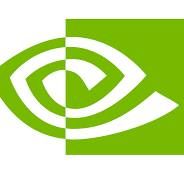Agentic AI Comparison:
Guardrails AI vs NeMo Guardrails
Introduction
This report compares two prominent AI guardrail frameworks: NVIDIA's NeMo Guardrails and Guardrails AI. Both aim to enhance safety and reliability in language model applications, but take different approaches to implementation and offer distinct features.
Overview
NeMo Guardrails
NeMo Guardrails, developed by NVIDIA, is a comprehensive framework for adding safety and security measures to language models. It focuses on conversational AI applications and provides tools for content filtering, topic control, and dialogue management.
Guardrails AI
Guardrails AI is an open-source Python package that offers a flexible approach to implementing guardrails for language models. It emphasizes data validation, structured outputs, and customizable safety checks.
Metrics Comparison
Autonomy
Guardrails AI: 8
Guardrails AI offers more autonomy in implementation, allowing developers to easily integrate it into existing projects without extensive setup.
NeMo Guardrails: 7
NeMo Guardrails provides a high degree of control over LLM behavior, but requires more configuration and integration with NVIDIA's ecosystem.
Guardrails AI edges out in autonomy due to its more flexible integration options, while NeMo Guardrails offers robust control within NVIDIA's ecosystem.
Ease of Use
Guardrails AI: 8
Guardrails AI is designed for simplicity, with a straightforward API and Pydantic-style validation that many Python developers find intuitive.
NeMo Guardrails: 6
NeMo Guardrails has a steeper learning curve due to its comprehensive nature and integration with NVIDIA's AI stack.
Guardrails AI is generally easier to use, especially for developers familiar with Python validation libraries, while NeMo Guardrails offers more power at the cost of complexity.
Flexibility
Guardrails AI: 9
Guardrails AI provides high flexibility with its RAIL specification, allowing for fine-grained control over LLM outputs and easy extension to various use cases.
NeMo Guardrails: 8
NeMo Guardrails offers extensive customization options for dialogue management and content filtering, particularly suited for complex conversational AI systems.
Both frameworks offer significant flexibility, with Guardrails AI slightly ahead due to its more generalizable approach to validation and guardrails implementation.
Cost
Guardrails AI: 9
Guardrails AI is fully open-source and can be used without any additional cost, making it highly accessible for developers and organizations of all sizes.
NeMo Guardrails: 7
NeMo Guardrails is open-source, but may incur additional costs when used with NVIDIA's commercial offerings or requiring specific hardware.
Guardrails AI has a cost advantage due to its fully open-source nature and lack of dependencies on specific hardware or commercial services.
Popularity
Guardrails AI: 7
Guardrails AI has a growing community and is gaining popularity, especially among Python developers looking for lightweight guardrail solutions.
NeMo Guardrails: 8
NeMo Guardrails benefits from NVIDIA's strong reputation in AI and has gained traction in enterprise applications.
NeMo Guardrails currently holds a slight edge in popularity, largely due to NVIDIA's market presence, but Guardrails AI is rapidly gaining adoption in the open-source community.
Conclusions
Both NeMo Guardrails and Guardrails AI offer valuable solutions for implementing safety measures in AI applications, but cater to different needs. NeMo Guardrails excels in comprehensive, enterprise-grade solutions for conversational AI, particularly within NVIDIA's ecosystem. Guardrails AI stands out for its ease of use, flexibility, and cost-effectiveness, making it an attractive option for a wide range of developers and projects. The choice between the two will largely depend on the specific requirements of the project, existing technology stack, and the level of control and customization needed.

